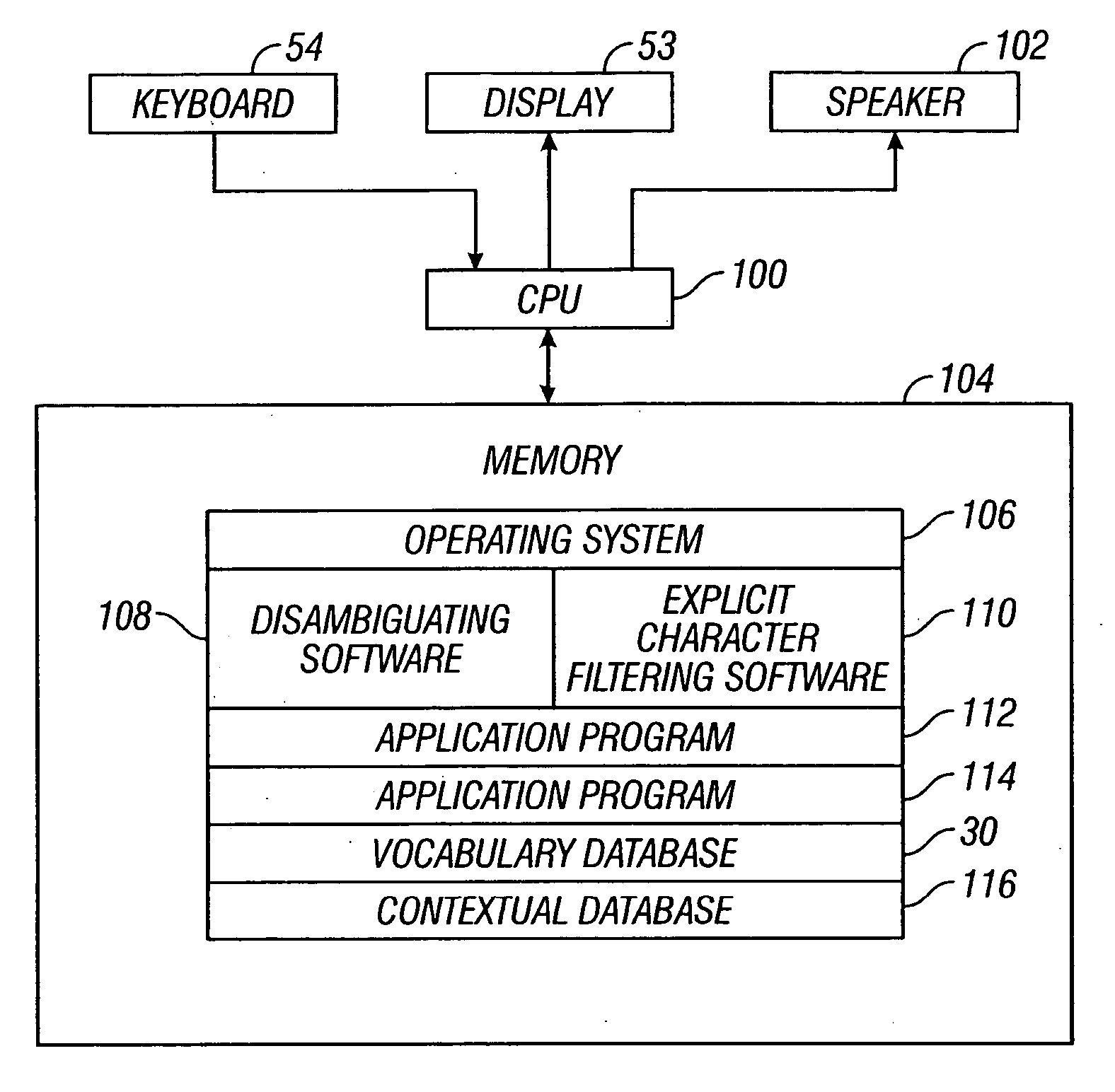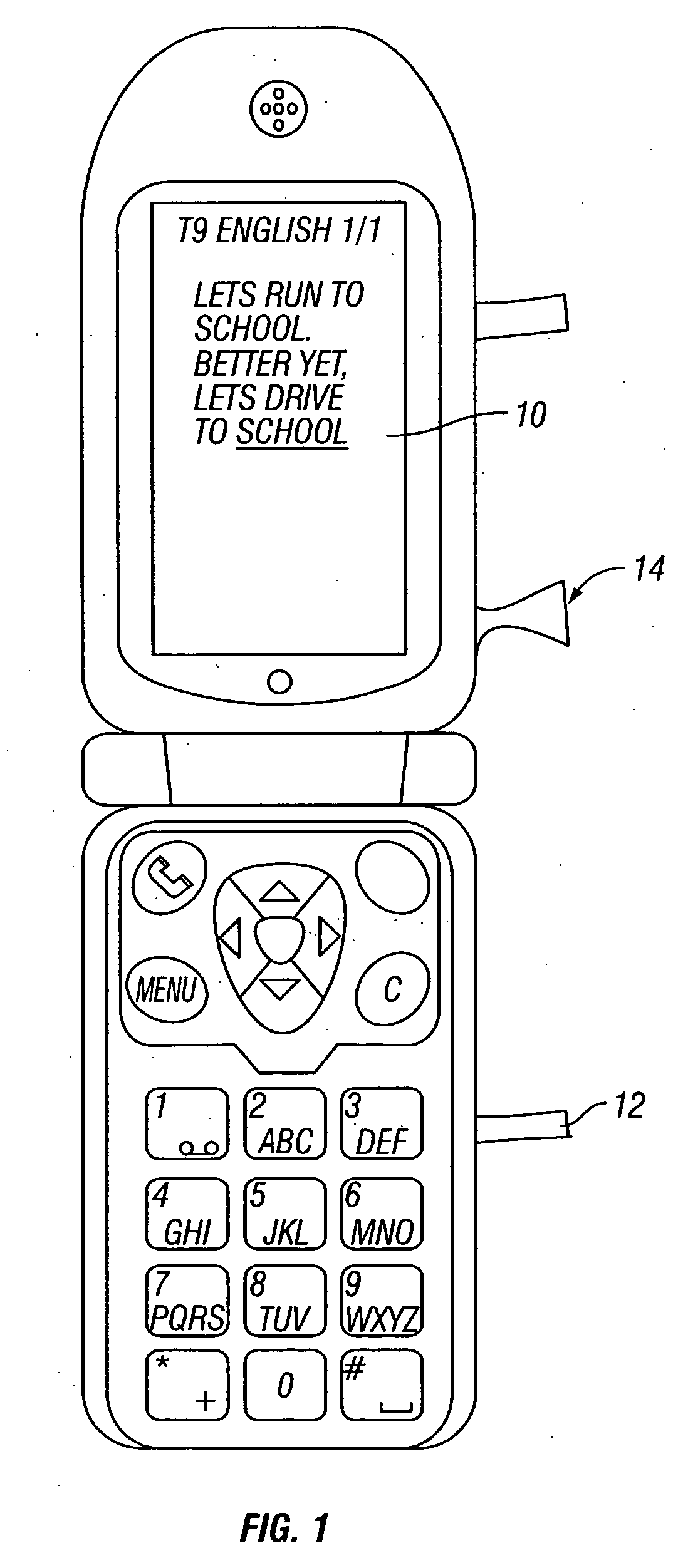Contextual prediction of user words and user actions
a technology of context prediction and user actions, applied in the field of user information entry, can solve the problems of limiting the size of the keyboard in the effort to produce a smaller portable computer, the keyboard is too small to be easily or quickly manipulated by a user, and the portability of the portable computer has been getting smaller and smaller
- Summary
- Abstract
- Description
- Claims
- Application Information
AI Technical Summary
Benefits of technology
Problems solved by technology
Method used
Image
Examples
Embodiment Construction
The invention concerns user entry of information into a system with an input device. A scheme is provided in which an entire word that a user wants to enter is predicted after the user enters a specific symbol, such as a space character. If the user presses an ambiguous key thereafter, rather than accept the prediction, the selection list is reordered. For example, a user enters the phrase “Lets run to school. Better yet, lets drive to “.””” After the user presses the space, after first entering the second occurrence of the word “to,” the system predicts that the user is going to enter the word “school” based on the context in which the user has entered that word in the past. Other predictions may be available if the user had previously entered text with the same context (for example, “to work”, “to camp”). These predictions are presented if the user presses the “next”. key; the key specified for scrolling through the list. Should the user enter an ambiguous key after the space, th...
PUM
 Login to View More
Login to View More Abstract
Description
Claims
Application Information
 Login to View More
Login to View More - R&D
- Intellectual Property
- Life Sciences
- Materials
- Tech Scout
- Unparalleled Data Quality
- Higher Quality Content
- 60% Fewer Hallucinations
Browse by: Latest US Patents, China's latest patents, Technical Efficacy Thesaurus, Application Domain, Technology Topic, Popular Technical Reports.
© 2025 PatSnap. All rights reserved.Legal|Privacy policy|Modern Slavery Act Transparency Statement|Sitemap|About US| Contact US: help@patsnap.com



